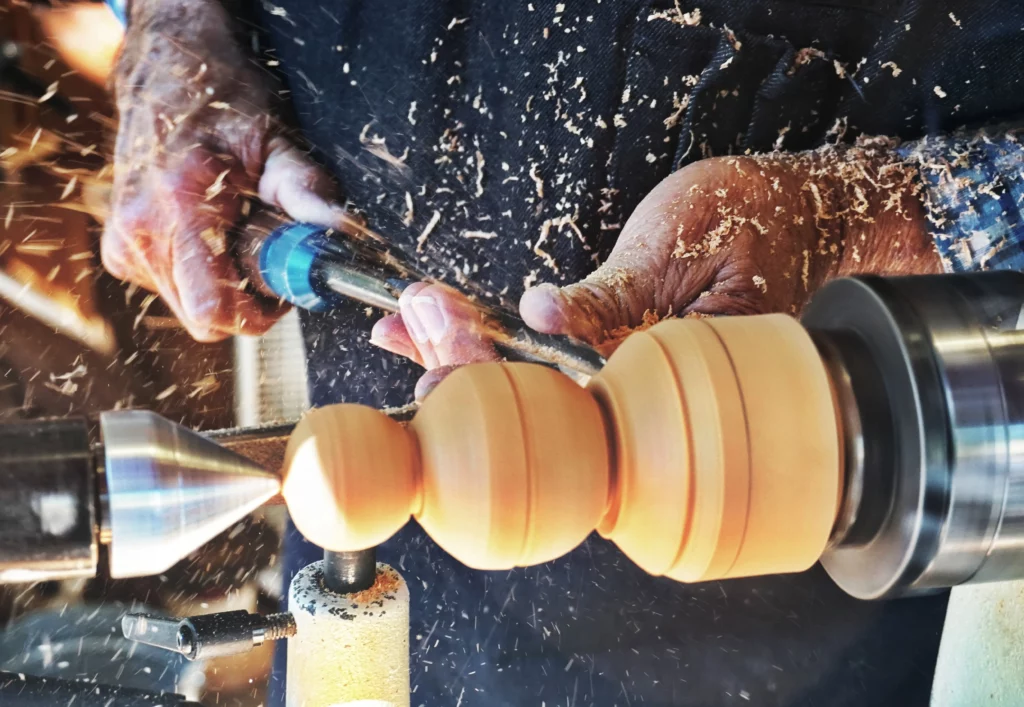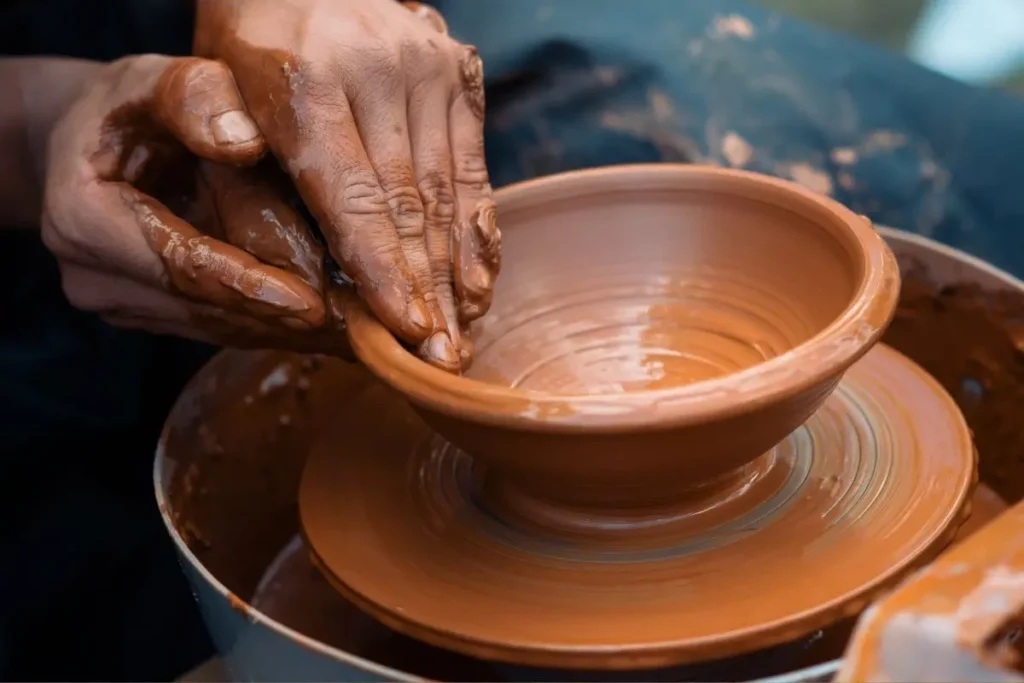Whether you are a hobbyist or a professional,
wood lathes are a must for woodworking.
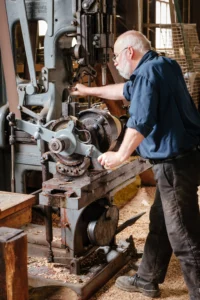
Wood lathe is one of the most popular machines used today to help shape the wood into desired shapes.
Woodturning is an amazing hobby that is like a mystery for many woodcutters. The wood lathe is an important and versatile tool that is used in manufacturing industries to perform a variety of woodworks.
Sometimes, working with wood is difficult and confusing, as woodcutting or turning shapes needs to be perfectly done with smooth corners. You need to have a good lathe and some other tools to learn the right techniques for woodturning.
Lathes are designed in a way that they can grasp the pieces of wood. In milling machines, we expose an immobilized piece of work to a rotating cutting wool, while on lathes, we expose a rotating cutting tool to an immobilized cutting tool.
All the brands of lathes work according to this same principle. Firstly, the piece of wood is placed on the lathe. In the next step, it starts to revolve against an immovable cutting tool.
Lathes are of two types; they can either be ‘wood lathes’ or metal lathes.
Let’s discuss.
1. What is a Wood Lathe machine?
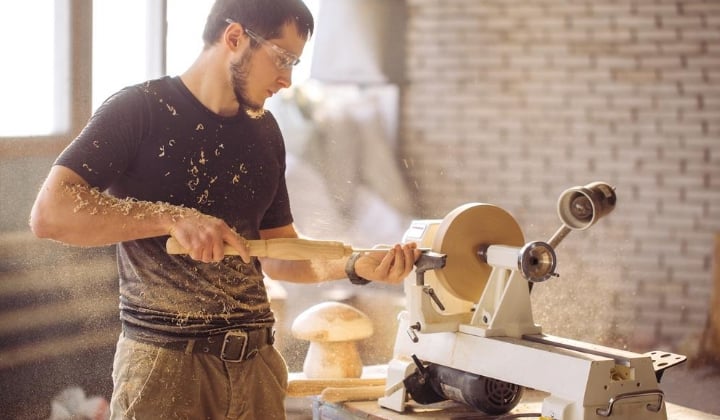
It is designed specifically to perform woodturning applications. A lathe is used for cutting wood or deforming wooden workpieces into several desired shapes. They are not appropriate for harder workpieces/materials including the pieces made from metals.
Wood lathes are designed simply and are small in size as compared to the metal lathes. A basic pulley system is used to rotate the workpieces in lathes. The power of wooden lathes is not as much as compared to the metal lathes, but wooden lathes are considered as highly effective at handling wooden workpieces.
Due to its ancient history, it is one of the most conventional and popular types of lathe. The design of the wood lathes is very simple that has a versatile horizontal metal rail. It revolves around its centerline to carry out all of its functions. You place your wooden piece between the two sides of the rail, it revolves around and gives you a chance to control it according to your wish.
You can get flawless and smoother results by having good control on your piece of work. The wooden lathe consists of four parts that include a bed, headstock, tailstock, and the tool rest. Most of the work performed on the lathes is manual, you just need to mold your workpiece according to your wish.
Are you a visual rather than textual woodworker? Head over to YouTube and enjoy this free masterclass on the basics of wood lathes:
2. What Does A Lathe Do?
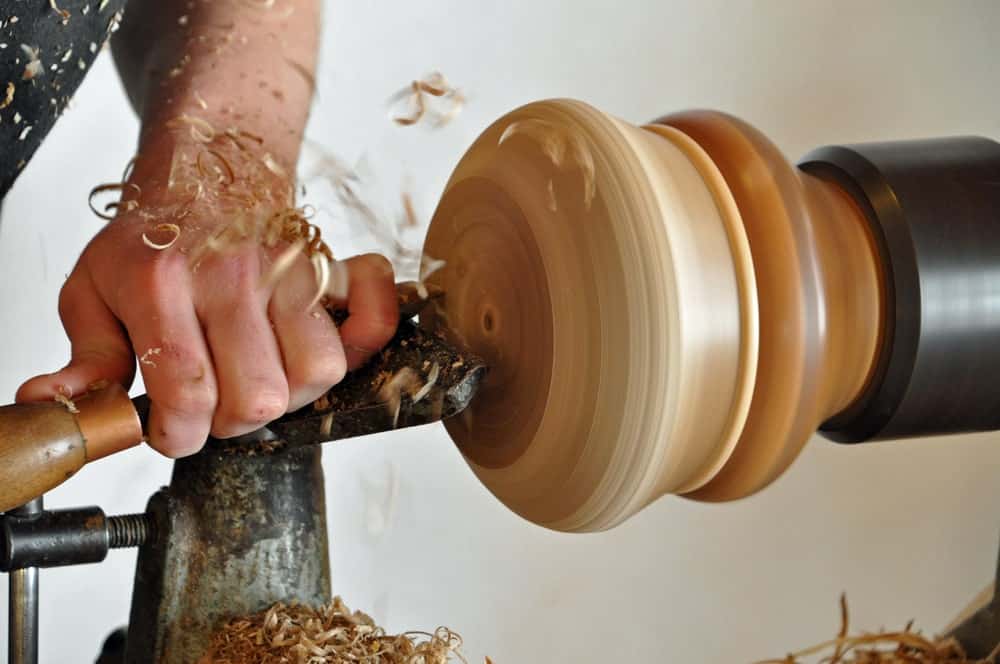
A trained operator of lathes can turn the wooden parts into beautiful and flawless finished products without human involvement, once the operation is initiated. Lathes can be used in a variety of projects of woodturning applications. This is the reason it has earned huge popularity in professional workshops.
Turning homemade bowls and wooden pens are among the most common uses of a wooden lathe. Many wood working hobbyists prefer to design their projects by using a lathe as it is more satisfying.
Similarly, jobs such as replacing the legs of tables or chairs are made much easier with the help of a lathe. Besides replacing, lathes are used in designing different shapes such as for making plates and bowls.
This type of lathe is used to design shapes according to the standard patterns. There is another type of lathe that is used to design the shape of foundries. They cut accurate straight lines for different projects.
In short, lathes are used for making replacement parts. Craftsmen are using lathes to create unique pieces of epoxy, wood, and nearly every other material.
On an industrial scale, lathes are used to produce several different parts such as driveshafts on cars.
Modern industrial lathes are fully automated unlike the lathes of the past, which means that the heads of lathes can hold more than one bits and can perform numerous processes. Such as, grinding of materials, refining or smoothing the wooden parts, and polishing etc.
3. How Does A Wood Lathe Work?
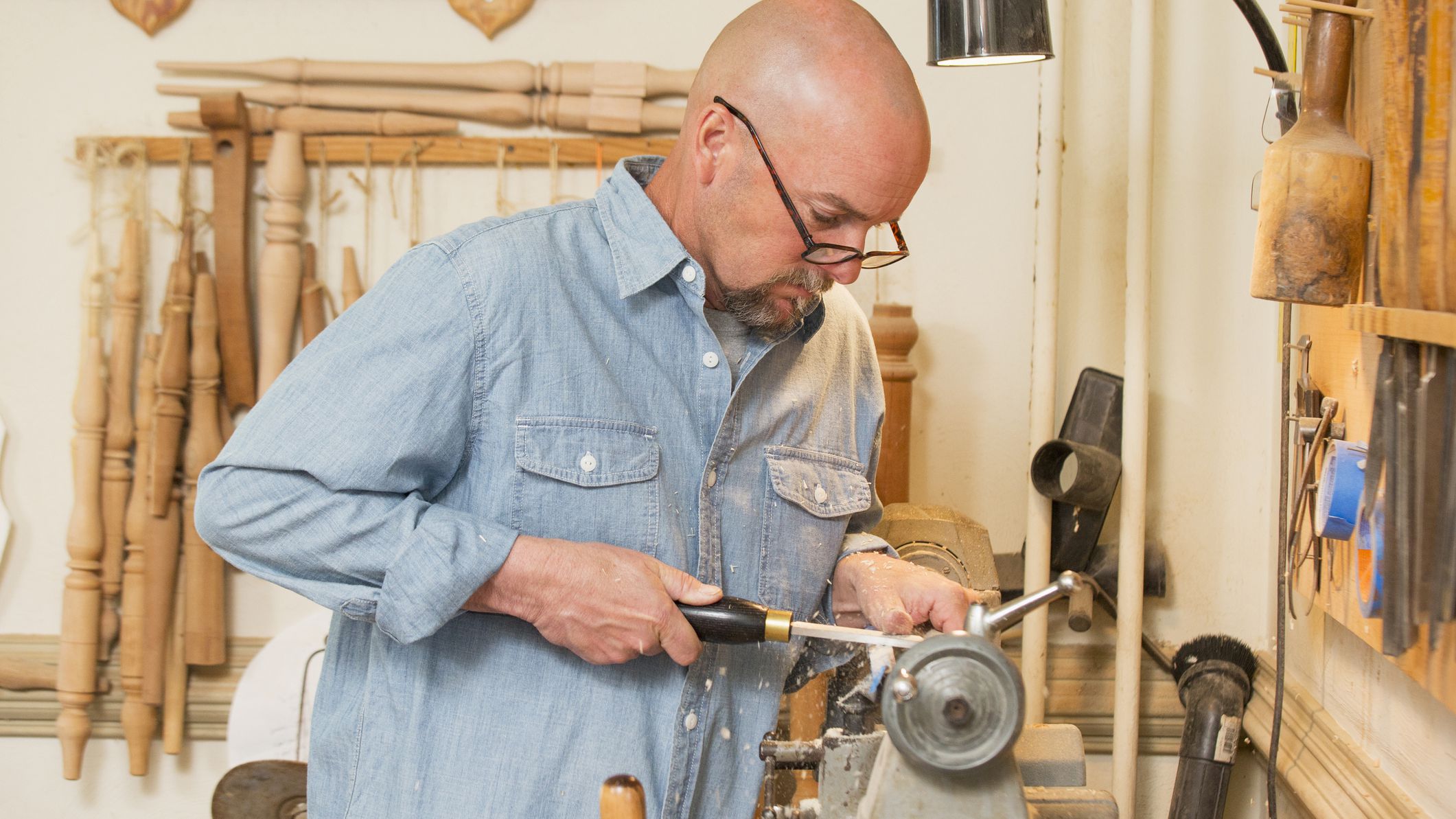
Wood lathes are used to manufacture beautiful decorative products of wood. These machines range from hobby models to professional industrial sized. The role of the lathe machine is to remove materials from the wood to mold it in a desired shape and size. Let’s start by setting up your machine and the piece of wood you are working on.
First of all, completely switch off the wood lathe to avoid any accident. Organize and set up the tools and use the positional holding of the tool rest. Setting up your tools is important as the wrong selection can lead to serious damage to your wood piece. Ensure that your tools are sharp, otherwise, they can also cause damage.
90 degrees angle is considered as perfect to cut the wood for optimal performance. However, it depends on the type of project and application. The stock of the wooden piece should be placed at the underside of the center. It will get into its position automatically when you revolve the wheel of the tailstock.
In the next step, it is important to note that your stock is tight. Otherwise, it can cause damage to yourself. Now, it’s the perfect time to turn your lathe on at a slow speed. You will notice a certain amount of resistance against you at the time when your workpiece moves into the tool. If you want a perfect cylindrical shape, it is important to cover all the directions. Now that we know how a wood lathe works, let’s move ahead.
4. Important Specs And Features
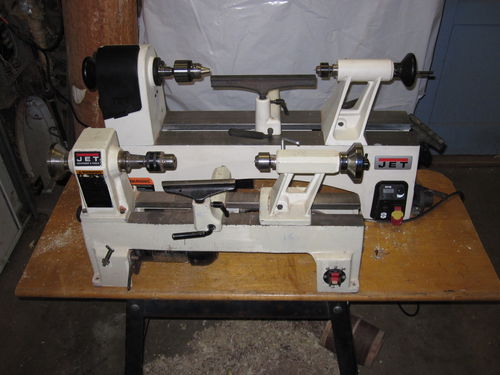
There are several key features of wood lathes that you need to consider in your purchase decision. All the models of wood lathes have their unique pros and cons for the user.
i. Size
Lathes have been divided into different types according to their size. Mini lathes are manufactured for the small works of wood, such as pen turning. Mini lathes are not typically used in larger projects such as in wooden bowls.
Midi lathes are the medium-sized lathes that are not too small and not too large. It does not come with a floor base unit that is freestanding, however; it can be placed on a bench.
ii. Speed
The speed should be appropriate according to the pieces of wood. The typical speed of the wood lathe varies from 500RPM to 4000RPM. The speed should be lower for wide pieces of wood.
Besides, a narrow stock can be turned at a speed of 1500 to 2000 RPM, while half of that speed is considered as best to turn thicker pieces. Typically, the on and off switch is located near the headstock, but it can vary.
iii. Weight
Wooden lathes can weigh anywhere from a couple of hundred to a few thousand pounds. The weight of the larger industrial lathes varies around several tons. The overall weight of the mini-lathes without the motor is 9kg or 20 lbs. The weight of the lathe itself will also play a role in what kind of projects it can handle.
iv. Motor
It is recommended to use an induction motor with 1450 or 1750RPM with a power of 1/4hp to 1/2hp. Any single-phase or three-phase motor with an appropriate-sized shaft can do the job.
Universal motors (motors with brushes) are not recommended, as the speed of such motors is very fast. However, it can be powered directly with a hand drill from the back of the drive shaft.
v. Other specifications
You want to have a look at the dimensions of the lathe. For instance, the workpiece on a mini lathe can vary between 12 and 20 inches. You also want to check the voltage of the motor that comes with the lathe, or whether it even comes with a motor at all. Also, if you plan on using accessories with the lathe it would be wise to check compatibility when shortlisting products.
5. How Much Is A Wood Lathe Worth?
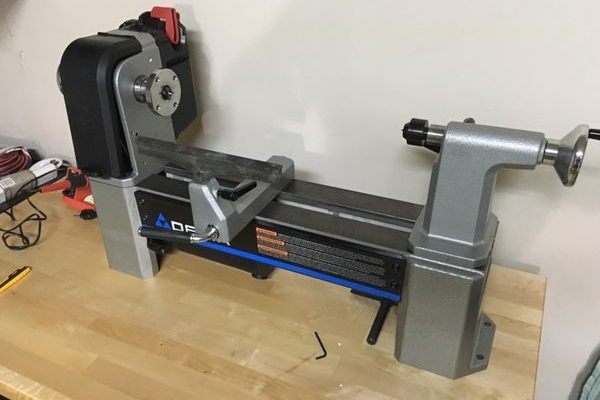
The cost of the cheapest wooden lathes ranges from $200 to $400. The cost of the mid-range lathes ranges from $400 to $800. It costs thousands of dollars for the high-end ones. An entry-level lathes would be best for you if you have turned wood before, but have never used a wooden lathe. You will learn the basics from the entry-level lathes.
Entry-level lathes are considered as best for the home users.
However, high-end lathes are perfect for people who want to work on a commercial scale or work specifically on large projects.
If you are interested in large projects and full-size lathes, have a look at our review of some of the best full-size lathes available on the market today.
6. What Are Some Top Wood Lathe Brands?
There are thousands of wooden brands out there. We recommend spending a little bit extra and getting a lathe from a reputable brand.
i. Jet
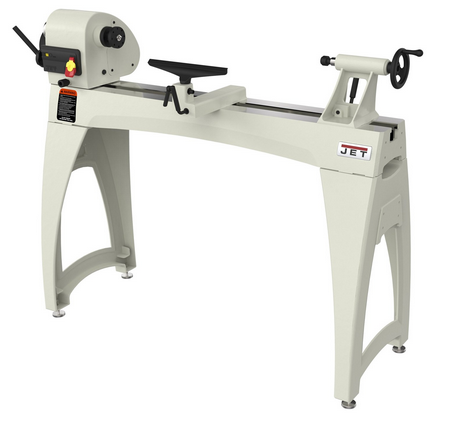
This market leader has been around since 1958 and has consistently delivered quality along with innovation in the woodworking industry. If you ask any seasoned woodworker as to what company is the best, the most probable answer would be Jet.
ii. PSI Woodworking
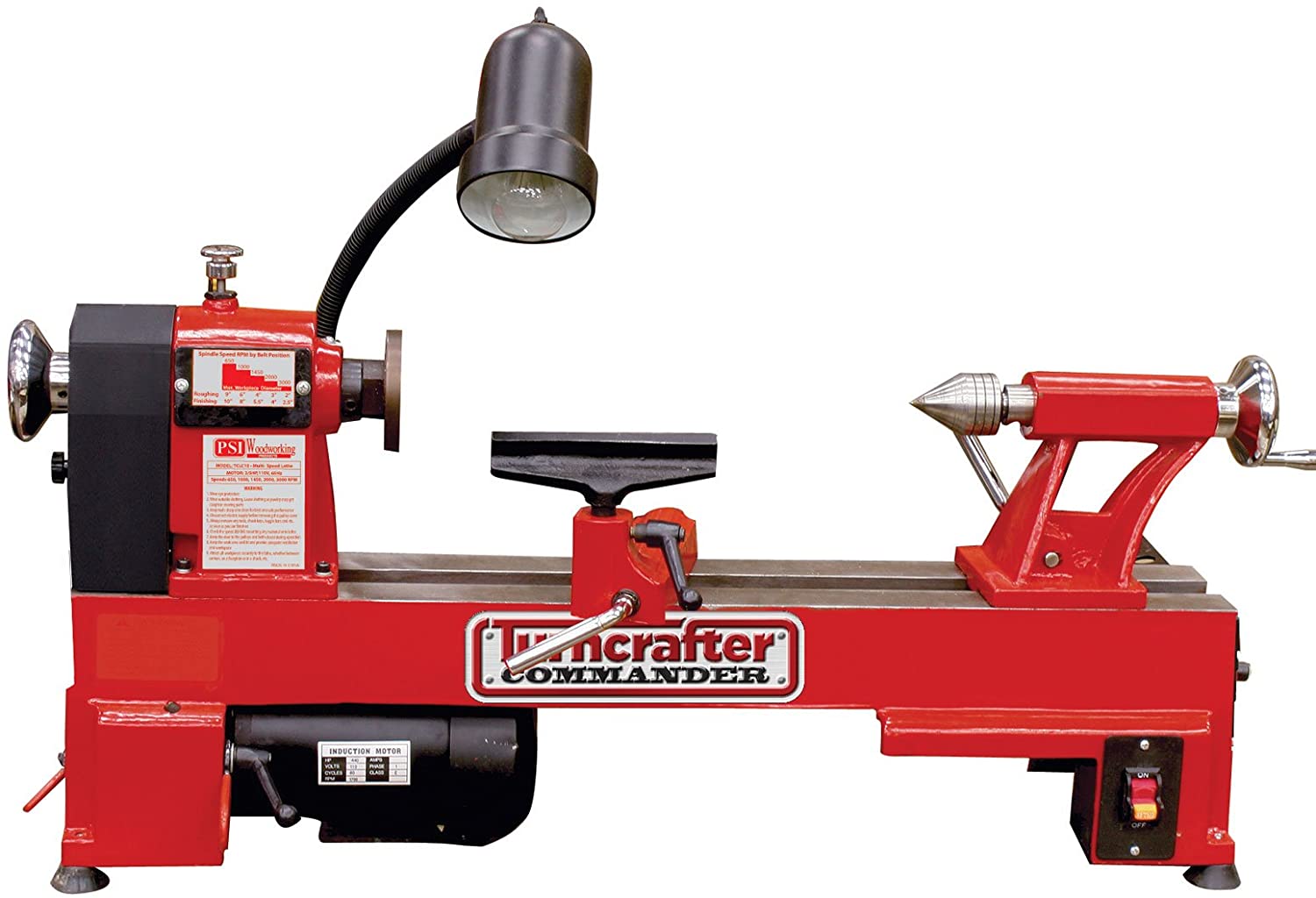
If you are looking for affordable and compact mini-lathes, PSI woodworking would be best for you. This is another very old and very trusted brand in the field of wood lathes. Plus, they manufacture a lot of accessories for their lathes so you can really build a capable setup.
iii. Grizzly Industrial Inc
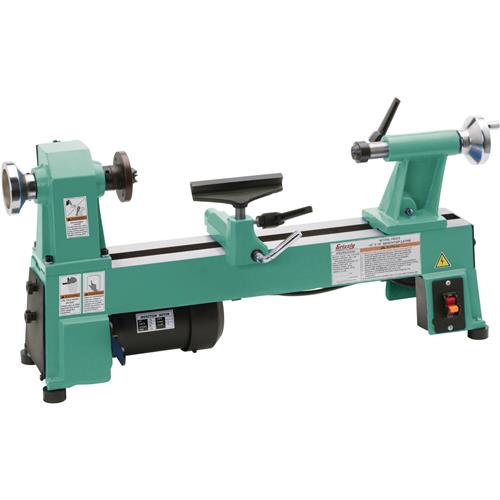
Grizzly Industrial Inc. is one of the leading companies of different kinds of lathes in the USA. They are specialized in the manufacturing of Light Duty, Medium Duty, Heavy Duty, and Oversize lathe machines. They manufacture modern lathe machines and undergo strict inspections to check product quality and performance.
Given their branding, it’ll be tough finding a Grizzly lathe for under 1000 bucks.
iv. Delta Wood, Lathe Manufacturing Enterprise
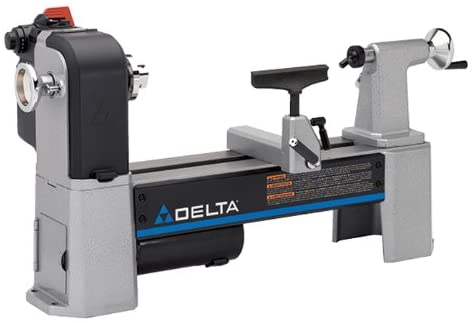
Delta Wood Company is known for manufacturing lathe machines. Their main aim is to focus on the high-precision and low-volume parts. Designing, manufacturing, and distributing woodworking tools from smaller, and larger projects, Delts company is stronger at developing lathes for the home and commercial users.
7. What should I look for in a wood lathe?
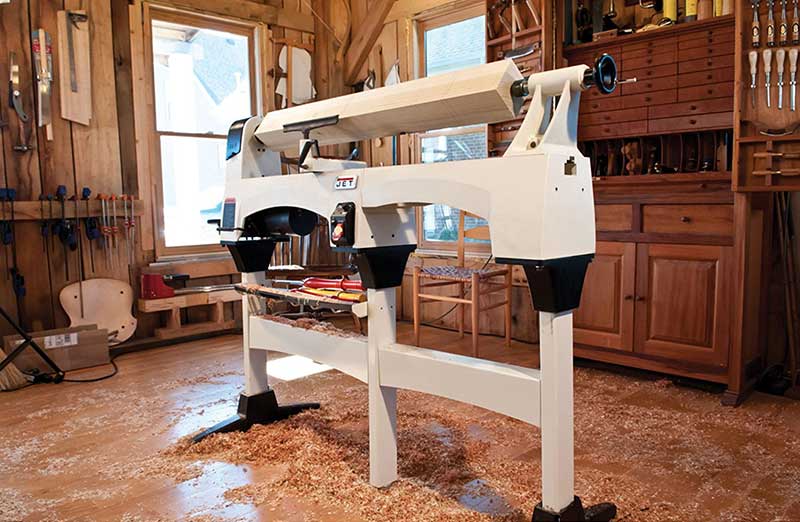
You must have a good quality lathe and quality wood-turning tools if you want to start your career in wood-turning. First of all, your main focus should be on getting a good lathe. Here, we have discussed some of the factors that you need to consider when purchasing a wood lathe.
i. Base
To produce good quality turned objects, the wood lathe must have a solid foundation. The bed of the lathe should be stronger to have a solid foundation. The bed of a lathe is the horizontal base that is usually made of cast iron. A sturdy base will help minimize or even eliminate vibrations during operation. Vibrations are not good while the workpiece is in operation as they can make it difficult to handle.
ii. Motor Specifications
The motor of the lathe is another essential factor that you need to keep in mind. Normally, the power of lathe motors ranges from 1/8 HP to 3 HP. Higher-powered motors can turn heavier and larger pieces of wood. The speed of the motor also plays an important role in the quality of lathes. Variable speed control should range between 400 to 3000 RPM or more.
iii. Tool Rest
The tool rest is another important factor to consider at the time of buying a lathe machine. It is essential to rest the tool against the tool rest when it comes to turning. The tool rest must get locked into a certain position when it gets set and it should also allow some vertical adjustment. The rest should be made of cast iron and its length needs to be around 10 inches. Tool rests made of cast iron also help minimize vibrations.
iv. The Headstock and Tailstock
The headstock is made and threaded for various accessories, such as chucks, etc. Ensure that the thread on the headstock is of good quality. Make sure that the threaded accessories can be used even after you upgrade the system of your lathe.
The rotating pin at the other end of the lathe is called the tailstock which functions to keep the spindle at the center position. Ensure that it gets locked in any position along the bed as it has an important role at the time of turning. It ensures that you can install a range of other tools and gives you additional flexibility.
8. How To Use A Wood Lathe (For Beginners)
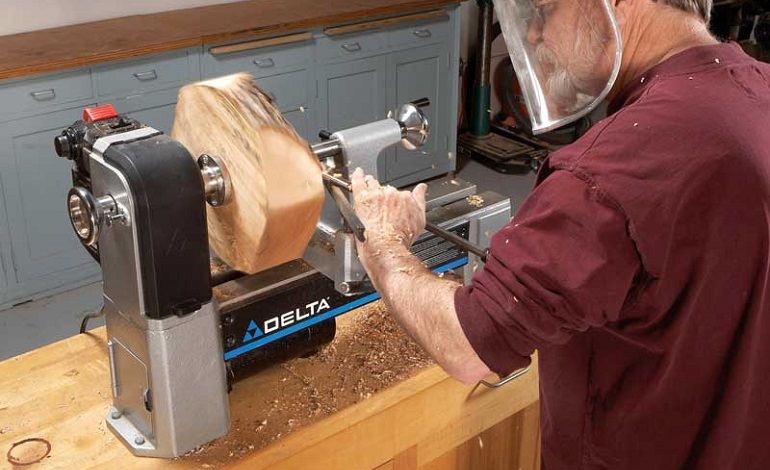
Using a lathe to manufacture pens, bowls, or other decorative accessories from raw wood can be an extremely enjoyable work and give you a feeling of accomplishment. There is no doubt that it takes many years of practice to become a master woodturner. Knowing where to start woodturning work can be quite confusing for beginners. Here are a few tips for beginners for using a wood lathe.
i. Safety
Wood lathes can be dangerous power tools and they can cause injuries. Protecting your eyes and face from wood chips is the most important consideration for beginners. Wear eye goggles and face shields to protect your eyes and face.
ii. Choosing The Right Lathe
Select a lathe machine according to the type of work that you want to do. For designing small ornaments, mini lathes are best. Large lathes are perfect for turning larger furniture and bowls.
iii.Work In Good Lighting
Proper lighting is essential at the working location as it allows you to see the details of the turning angles. It is recommended to use a moveable lamp at the working location because it allows you to see imperfections that otherwise are difficult to spot.
iv. Have The Right Tools
You do not need to have an extensive range of tools for woodturning. There are a few main tools required in woodturning such as scrapers, gouges, skew chisels, parting tools, and so on. Buy good quality tools to start your work.
v. Learn To Use The Main Chisels
Once you get your kit of your tools, learn how to use them in the right way. For example, roughing gouge is used to give a basic shape to a block of raw wood. Learn the basic skills of how to use it for the best results.
vi. Practice The Basic Techniques
Spend time learning the basic woodturning procedures if you are a beginner. You can go for the challenging patterns of designs once you are confident with the basics. You will need practice and patience to eventually master the art of bowl turning.
9. Project ideas
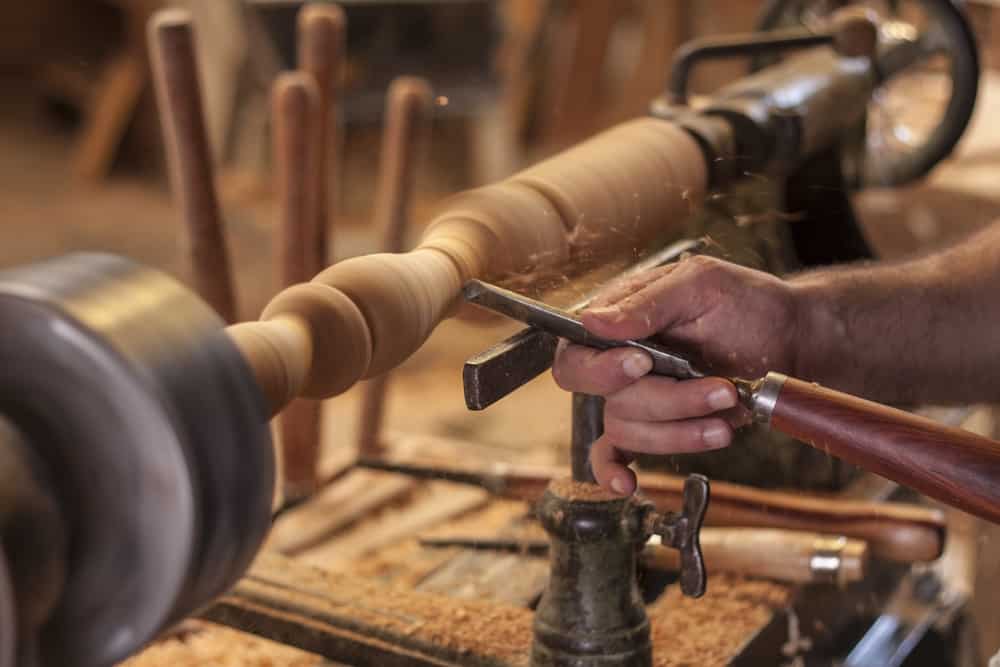
If you want to learn the skills of woodturning and are serious about it, then it is essential to start practicing. In the beginning, do not go for complex projects. Here are some simple project ideas that you can start with.
- Handles of Kitchen Tools
- Wooden Bowl
- Tea light holder
- Wooden rings
- Square Serving Trays
- Mini candle Stool
- Rolling pin
- Ring Minder
- Weed pots
- Chopsticks
- Wall clock
- Wooden Faceplate
- Lazy Susan
All of the above projects are very simple and can be carried out with basic woodturning skills. Here are a few more project ideas for you to explore. To get even more juice out of your tools, once you are finished using your lathe to craft a piece, you can create incredible intricate detail with your own laser cutter for wood.
10. Maintenance For Your Wood Lathe
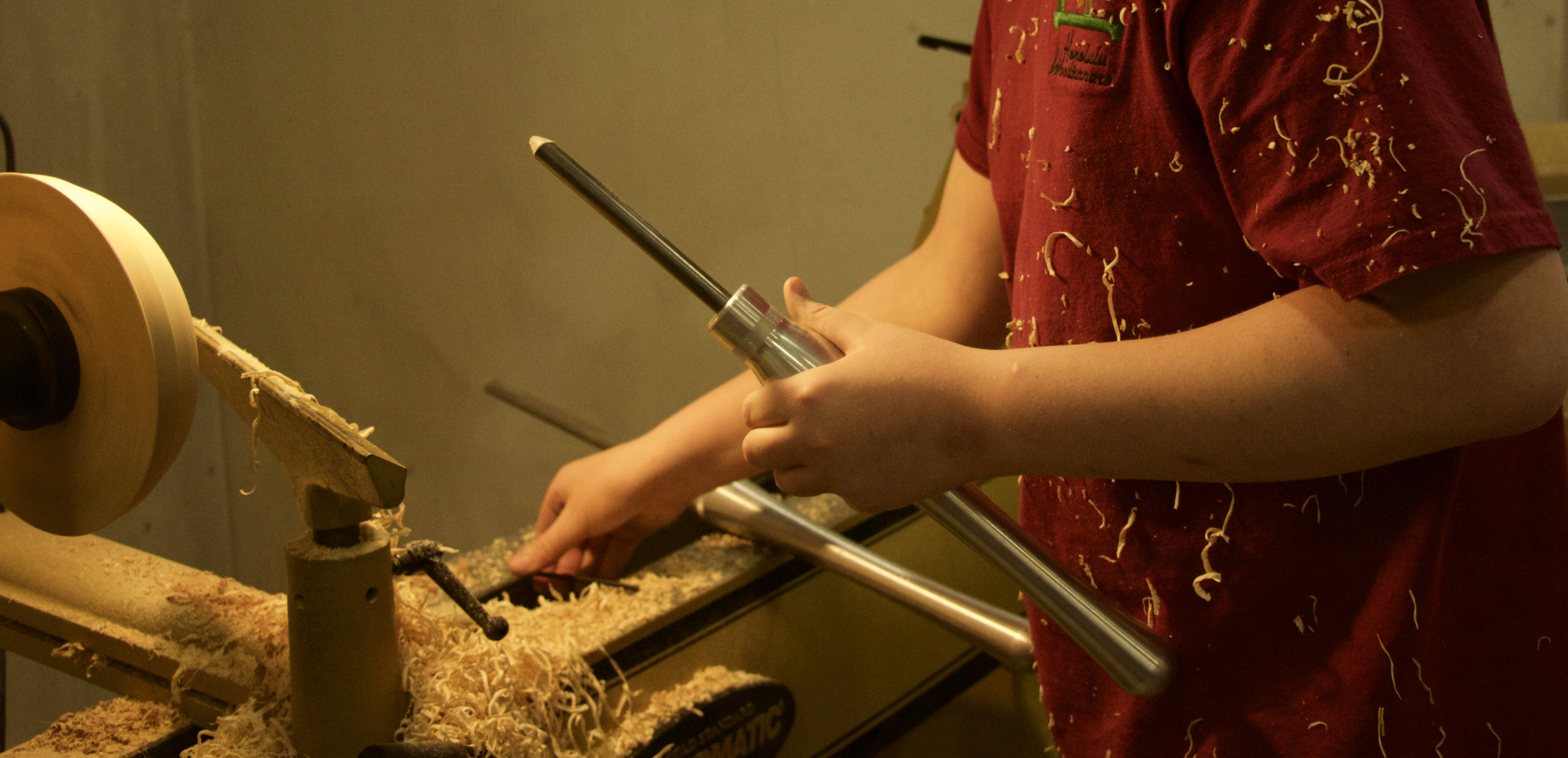
Here are a few tips and tricks to help you maintain your wood lathes.
Clean Out The Morse Taper
Morse tapers include the tailstock and headstock. They should be cleaned out properly. The center and the drive spur should be properly aligned which is very important for detailed work.
Wax Your Tool Rest
The waxing procedure keeps the edge smooth. Irregular and inconsistent edges lead to difficult turns to perform long cuts.
Wipe It Down
Use silicone spray to wipe out the different parts of your lathe machine. Silicon spray reduces friction and makes the lathe parts smooth.
Clean The Threads of Headstock
Threads of the headstock secure the faceplate in place. Cleaning the threads of the headstock maintains the sequence with the tailstock. To get rid of the dust in the thread, you can use an old toothbrush.
11. Safety Guidelines
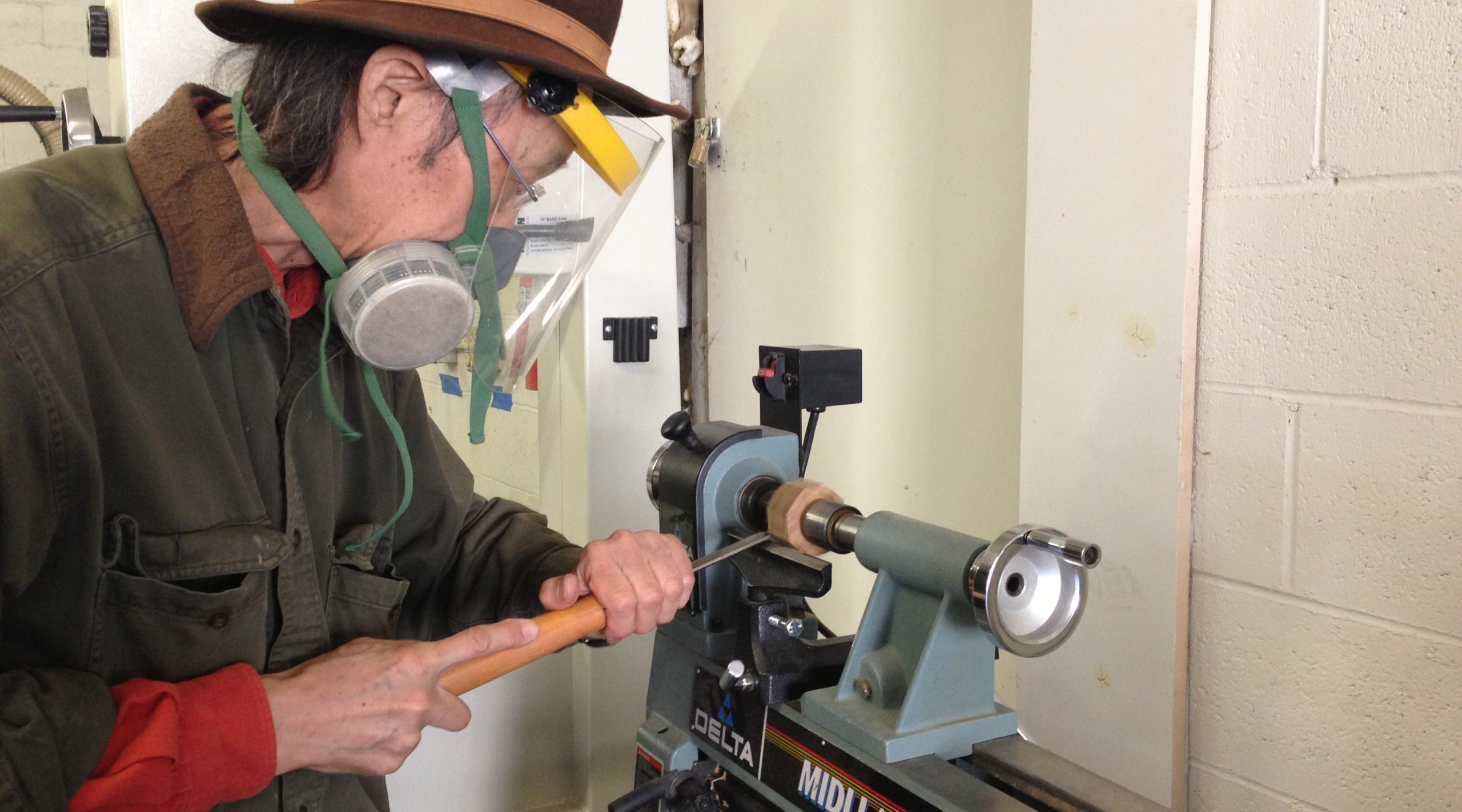
- Keep a safe distance from the lathe machine to prevent injury from moving parts.
- Do not use much force to perform actions on the machine.
- Turn the switch off before performing any cleaning actions. Use a brush to clean any dust or debris instead of using your hands.
- Keep your hands away from chucks and faceplates at all times.
- Do not work on the lathe machine under the influence of drugs or when you are feeling tired.
- Always remove the chuck key immediately after using the lathe.
12. Conclusion

Woodturning is a creative and amazing hobby that makes you feel happy. Wood is not only used to create boards, beams, or other building materials but is also used to design ornamental, beautiful crafts and decoration pieces. Woodturning allows you to explore your creative side. You can independently create a lot of decorative things for your home with the help of lathes.
- A Comprehensive Guide to Woodworking Tools: Over 35 Different Tools - January 5, 2024
- What is Woodworking? The Art of Wood in a Nutshell - January 4, 2024
- The Benefits of Using Wood in Plumbing Fixtures and Decor - December 29, 2023

